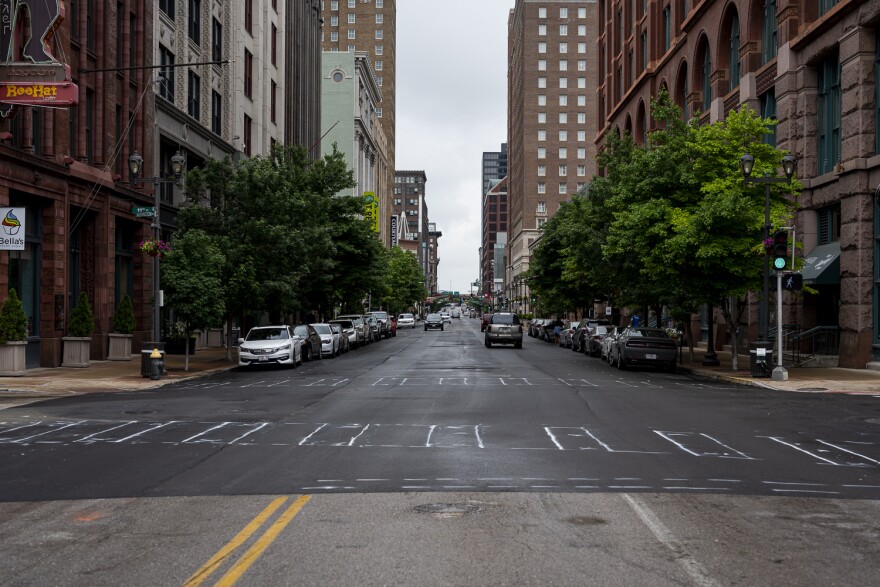The coronavirus pandemic has caused a big drop in traffic on St. Louis-area roads, and that’s been helpful for the region’s street and transportation departments.
“It makes it much easier for them to get equipment and materials to and from the job site, as well as it makes the job sites much safer for everyone to work in, which increases productivity,” said Joel Cumby, the construction engineer for the Illinois Department of Transportation’s District 8, which includes the Metro East.
For IDOT, the biggest benefit was along Interstate 255, Cumby said. Four miles of the roadway is currently closed for a complete rebuild, but the pavement on the section that remains open was deteriorating quickly.
“We were able to jump down into the south section, have some lane closures, get the additional pavement repairs performed, get them completed, and that will allow us to stay on schedule with that project,” Cumby said.
In Missouri, contractors with the state’s transportation department have been able to work longer hours, which means projects will be completed sooner. And in St. Louis, crews have been able to pave downtown streets torn up by utility work.
“One benefit to more people staying home these days is that there are fewer people on the roads. So, we’re able to take advantage of that and the warmer weather to get started on this much needed work,” St. Louis Mayor Lyda Krewson said in a statement announcing the paving early this month.
But the pandemic has actually made it harder for crews to do paving work in St. Louis County, said transportation department spokesperson Dave Wrone. Most of the work is in residential areas, he said, and there are more cars parked on the streets because more people are at home.
The biggest issue for road construction workers in both Missouri and Illinois has been speeders. While volume on Illinois highways was down 40 percent in April compared to last year, the people who were on the roads were frequently speeding. Officials in both states clocked drivers going above 100 mph in work zones. Missouri is also seeing an increase in distracted drivers.
Follow Rachel on Twitter: @rlippmann
Send questions and comments about this story to feedback@stlpublicradio.org





